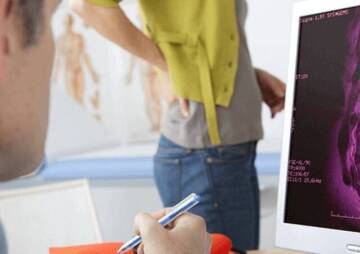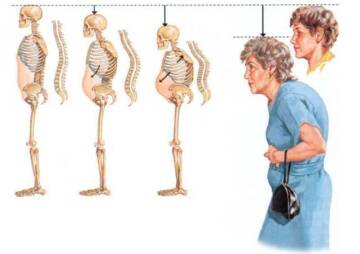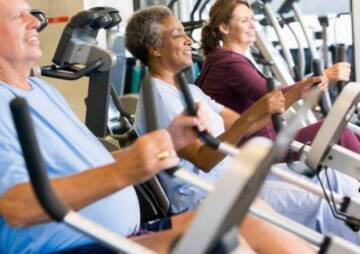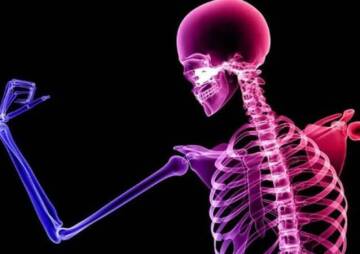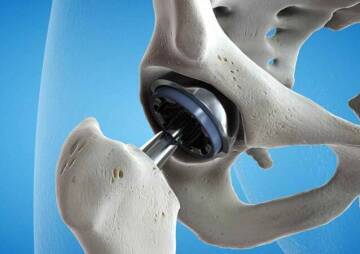-
Category
Craniomaxillofacial Surgery
Orthopedic Surgery
Spine Surgery
Orthopedic Implants
Hip Surgery
Knee Surgery
Pectus Excavatum
Bone Graft
Disinfectants
Healthcare
Prevent osteoporosis by exercising properly

Activities such as jumping, running or even jogging can lead to weak bone fractures in people with severe osteoporosis. If you have osteoporosis, this article introduces you to the exercises you should and should not do.
Osteopenia and osteoporosis are the main causes of disability, especially in older women. Osteoporosis is a disorder of bone mass density that is severe and weak. In severe cases, due to severe bone weakness, some simple movements may lead to fractures in the hip and spine. But how can you reduce the risk of these life-threatening injuries? The best offer is exercise.
Increase your muscle strength, improve your balance, reduce the risk of bone fractures, maintain or improve your posture, and relieve or reduce pain with exercise.
There are certain types of exercise that strengthen muscles and bones, and others are designed to improve balance. Each of these exercises will somehow prevent osteoporosis and its injuries. Get to know them.

What is osteopenia?
When you have weak bones but do not have osteoporosis, you have osteopenia. BMD bone mineral density test indicates that you have osteoporosis or osteoporosis.

Osteopenia is asymptomatic and this loss of bone density will not cause you to feel pain or discomfort. For this reason, it is considered a silent disease.
You can read more about osteoporosis in the article "types of osteoporosis".
Exacerbating factors of osteoporosis
Bone density peaks naturally by the age of 35, after which the bones weaken with age. But some choices and habits can accelerate osteoporosis. For example, not getting enough calcium and vitamin D, smoking, drinking too much alcohol, taking certain medications, such as corticosteroids and anticonvulsants, and not exercising. So by changing these habits, you can prevent osteoporosis as much as possible.

How is osteopenia treated?
The goal of treating osteopenia is to prevent it from progressing and becoming a severe form of osteoporosis. In fact, there is no cure for it. The only way to prevent its severity.
Part of this treatment includes diet and exercise and the other part is medication. Doctors usually do not prescribe medication when the severity of osteopenia is low. But if your BMD is close to osteoporosis, medical treatment is necessary.
Diet for osteopenia
To get calcium and vitamin D, low-fat and low-fat dairy products such as cheese, milk and yogurt, and some types of orange juice, breads and cereals that are fortified with calcium and vitamin D are good choices. Broccoli, freshwater salmon and spinach are also good sources of calcium.

Choosing the right form of exercise
This type of exercise is often recommended for people with osteopenia.
Strength training, especially upper back exercises
These exercises are performed using weights and stretching bands and are useful for strengthening all muscles, especially the muscles of the spine, and for balancing the body. This resistance exercise can also help maintain bone density.
Of course, resistance training should be commensurate with your ability and endurance, especially if you are in pain. A physiotherapist or personal trainer with experience working with people with osteoporosis can teach the proper form and method of these exercises to prevent further injury.

Weight-bearing aerobic activity
This type of exercise works directly on the bones of your legs, buttocks and lower back to slow down the process of mineral loss. They also have cardiovascular benefits and contribute to the health of the heart and circulatory system.
Stretching exercises
These exercises are usually done to cool the muscles after other exercises and it is very important that you do them under the supervision of a specialist. Because some of these movements damage your bones.

Stability and balance exercises
Stability and balance exercises help your muscles work together to maintain your balance. Simple exercises such as standing on one foot or movement-based exercises such as tai chi can improve your stability and balance.
Choose the type of exercise based on age
Young people and adults or young women who are prematurely menopausal and have osteopenia 30 minutes of brisk walking, running, dancing and light aerobics on a daily basis can strengthen their bones.
Brisk walking, running or even jumping are examples of weight training exercises. In the sense that in these cases the feet touch the ground. And the bones are strengthened. Swimming and cycling are also good sports, but they help improve heart health and strengthen muscles, not strengthen bones.

A slight increase in BMD can significantly reduce the risk of fractures at older ages. However, the older you get, the harder it becomes to build bone. For this reason, with age, it is necessary to focus on exercises that strengthen muscle and balance. Walking is still great in this situation, but now it is necessary to include swimming and cycling in the exercise program to strengthen muscle and balance the body.
Examples of exercises suitable for osteopenia
Stretching the thigh muscles
This exercise strengthens the muscles around the thighs and buttocks and helps increase balance. It is best to do this exercise two to three times a week.
- Stand next to a chair and hold it with one hand. Stand perfectly straight.
- Place your other hand on top of your pelvis and bring your foot out and hold it straight.
- Keep your toe forward. Try not to raise your leg high enough to lift your pelvis.
- Then lower the leg. Repeat this exercise 10 times for each leg.
Lifting the toe and heel
This exercise strengthens the lower legs and improves balance. Do them every day. If you feel pain in the soles of your feet during this exercise, wear shoes.
- Stand behind a chair. Hold it gently with one or both hands. Keep your balance, try to stay balanced with just one hand or a few fingers.
- Stand up straight, keep your heels on the floor, and lift your toes off the floor. Stand up straight and keep your knees straight. Hold for five seconds. Then lower your toes.
- Now place your toes on the ground and lift your heels off the ground. Hold for five seconds. Then gently lower the heel.
- If you feel muscle cramps during any of these stages. Rest your legs for a few seconds.
- Do this movement ten times for the heel and ten times for the toe.
Stretching the muscles of the back of the leg
This movement strengthens your back and hips and stretches the muscles in the front of your thighs.
- Lie on your back on the mattress on the floor or on the bed.
- Put a pillow under your abdomen so that you do not put pressure on your back when you lift your legs. You can put your head on your hands or on a towel.
![Stretching the muscles of the back of the leg]()
- Take a deep breath, gently press your pelvis onto the pillow, and contract your hip muscles.
- Bend your knee slightly and then slowly lift one thigh off the ground. Count to two and lower your legs again.
- Do these movements ten times for each leg.
If you have osteoporosis, do not do these exercises
Activities such as jumping, running or even jogging can lead to weak bone fractures in people with severe osteoporosis. In general, avoid fast movements. Choose exercises with slow and controlled movements.

Exercises in which you bend forward and bend your back, such as putting your fingers on your toes while sitting, can increase the risk of compression fractures in the spine if you develop osteoporosis.
Don't miss the article "Osteoporosis and spinal fractures".
Golf, tennis, bowling and some yoga moves that may force you to bend or twist your back tightly, resulting in a compression fracture of the spine.
What do you do to protect yourself from osteoporosis? We are waiting for your comment.
- Tags: osteoporosis
